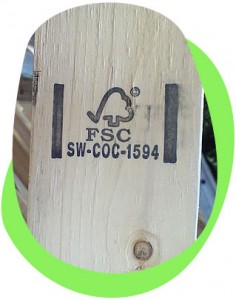Use sustainable products
- Timber: Wood is a renewable natural resource, but the Earth can produce only so much, and Britain is one of the largest overconsumers in the world. For new wood and wood products, ensure anything you buy carries the logo of the Forest Stewardship Council, which indicates that it has come from responsibly managed forests. Check out the FSC’s website for more information, including products and where to buy them. See also Friends of the Earth’s Good Wood Guide.

- Thermafleece insulation makes use of a renewable UK product – sheep’s wool. – and is available from these retailers. Warmcel insulation and insulating boards are made from old newspapers.
- Often ‘green’ and ‘natural’ are seen as synonymous. But buying recycled synthetics can divert resources from landfill – creating one more cycle in a human-created system, rather than making yet more demands on already overburdened ecosystems. Recycled plastic fencing, for example, can be more environmentally sound than new wood – even though it’s less ‘natural’.
- For flooring, one good approach is to choose natural, renewable materials such as coir, sisal, jute, cork and wool; real linoleum (not its PVC imitation) is also a traditional natural product. On the other hand, you could go for recycled carpets – these will usually use mixed fibres, and so cannot guarantee to be ‘natural’. There’s more on flooring in ‘At home‘.
The range of green DIY products available is expanding and green DIY suppliers offer not only a good range of products but also advice and information on the products and their use.